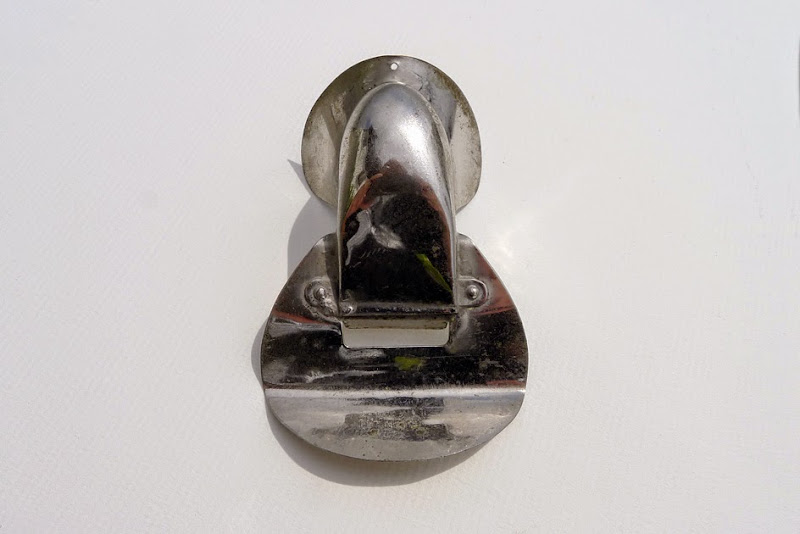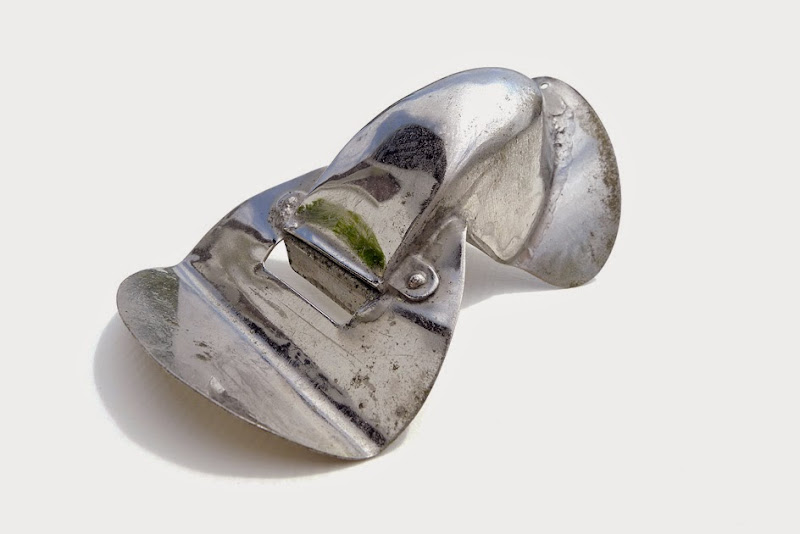
The nose flute itself is beautiful. It's an early Stivers' era tin Humanatone in its whole beauty. The chrome plating is in a very great condition, with very few traces of corrosion (mostly in the nose rest).

 |  |

 |  |

The stampings are crispy, show the usual patent numbers, and are of the type "Trade Humanatone Mark" (meaning the mention 'Trade Mark" is symmetrically split on each side of the name Humanatone), contrarywise to later Humanatones, which wears a "Trade Mark Registered" line under the brand. It is also stamped with "Other Patents Pending" (which never will be registered...)
This Humanatone stampings, compared to two later models:


 |  |
This Humanatone flap, compared to the bolster shape (earlier?) and the pear shape flap:

 |  |

Last detail on this Humanatone: a little hole above the nose saddle. I am not able to tell if it is original or was made by the nose flute owner. The fact is I have never seen such a hole on another Humanatone, and when some people drilled or punched out their flute in order to pass a neck cord, they generally did it at the bottom of the mouth shield.

Despite its missing side flaps, the box is beautiful, with its gorgeous sticker applied on a grained paper. It is absolutely similar - a small detail and the color excepted - to the one we published here, but should be a little later, since the Humanatone contained in this other box was of the "bolster flap" type. Also, this earlier burgundy color box was printed with "Style No. 20" and "Price $1.00" :
This Humanatone box, compared to the earlier (?) one:



The user manual, as said above, is in great condition. It is a 5½ by 10¼ inch document, printed on one side only, contrarily to a later user manual (1920s?) that we published here.
This user manual, compared to a later (double-side printed) one:

 |  |
Detail of this user manual, compared to the 1903 Howe catalog Magic Flute ad:


Another detail is important. On this user manual (contrarily to other ones or boxes), the "Humanatone M'F'G Co." address is specified: 15 Ann Street. Booom! We know that the Stivers moved from 15 Ann Street to… 35 Ann St. in 1911 (see here), a small step for Geo. Stivers, one giant leap for nose flute historic research: we are able to date this chromed Humanatone.
This nose flute is prior to 1911, and posterior to 1905. Indeed, the trade mark design, with the heraldic lion rampant dates of Apr. 18, 1905 (filing the trade mark by J.J. Stivers). 1905-1911 is the time frame during which the nose flute was produced, but I guess the reality is in the second half, since, as shown above, there was a different model produced before this nose flute, but having the same lion logo. So, our shiny Humanatone should date of ±1908-1911, more or less...(but not more:)

Superb journalism and fabulous photography.
ReplyDeleteThank you Maikel!
Delete